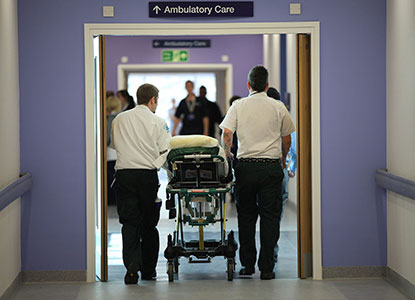By Richard Johnstone | 23 February 2015
Increasing demand and funding pressures in the NHS have led to foundation trust hospitals running a cumulative deficit five times higher than forecast in the financial year to date.

Monitor’s latest survey of the 147 foundation trusts, which make up nearly two-thirds of all hospital trusts, found the number of people being treated in accident and emergency departments increased by 8% in the last three months of last year, compared to 2013.
In total, 2.7 million people were seen in A&E units between October and December 2014, which led to 570,000 admissions for further treatment, 40,000 more than the previous year.
In addition, foundation trusts treated over 2.3 million non-emergency patients in the quarter, an increase of 7% over the same period last year.
This has been reflected in an increase in deficits in the sector, with the total over the nine months to the end of December standing at £321m.
More than half of the trusts (78) are now in deficit, and as a group, the trusts failed to meet national waiting times targets for A&E, routine and cancer care for the third successive quarter.
Around £810m of cost savings have been made in the financial year to date, which is £210m less than planned.
Publishing the figures, Monitor chief executive David Bennett said: ‘Trusts are working harder than ever to overcome the challenges they face while still meeting patients’ expectations for quality care.
‘However, the NHS needs to move rapidly towards more joined-up, efficient models of care if it is to deal with this continuing growth in demand for services.’
Responding to the figures, Paul Briddock, director of policy at the Healthcare Financial Management Association, said the report showed ‘a disturbing position in terms of how the sector is performing’.
He added: ‘The combination of unprecedented levels of demand, with an 8% increase in A&E attendances above last year and a 20% increase in delayed transfers of care, together with the cumulative effects of year-on-year high levels of efficiency requirements and the costs of implementing quality initiatives such as safer staffing levels, continue to take their toll.
‘An overall financial overspend for the sector of £321m is alarming, with 52% of all FTs and 73% of acute FTs now being in deficit. Key performance target failures on A&E four-hour waits, 18-week admitted care and 62-day targets are equally concerning.’





















